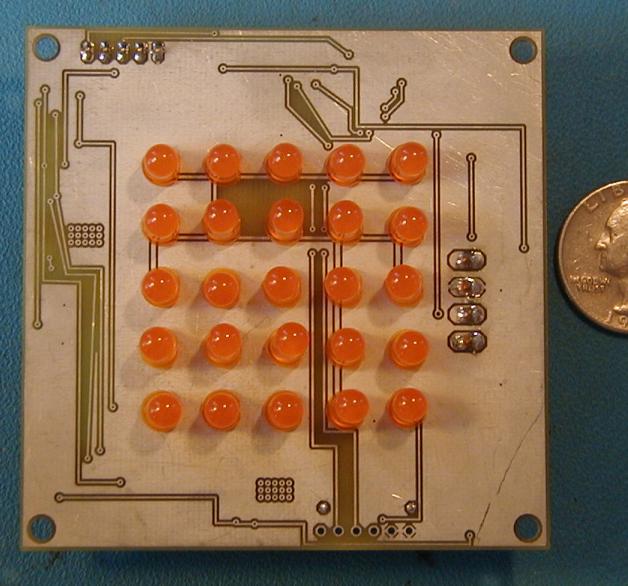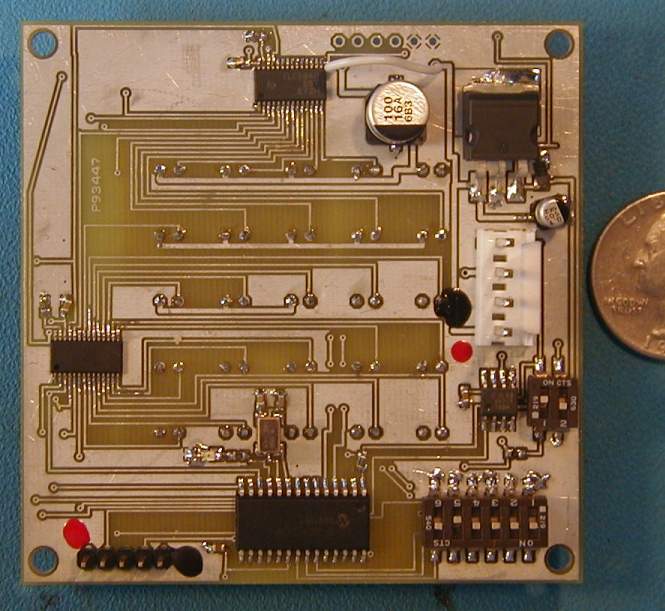Hive unit - 25 individually dimmable LEDs, controlled with RS-485,
using a custom high-speed data format or DMX
This web page documents a board with 25 LEDs, individually dimmable via
RS-485
Board size: 3.00 x 3.00 two-layer
Project timeframe: Jan 2007
Client: Leo Villareal
Initial webpage creation: May 20 2007
Top view:

Bottom view:

(these pictures are of the prototype, production units have black
soldermask for aesthetics)
The Hive installation is 192 of these individual units, controlled by
four Leoplayers. Each
hive unit has 25 LEDs, dimming is done with two TI TLC5940
LED drivers, a PIC18F252 controls everything. The dimming data
input is 8-bit, which is transformed to 12-bit for the TI chip via a
gamma-correction like lookup table. Power input is 12V. The
DIP switches select the unit #, if it should run a built-in test
pattern or not, and if the RS-485 should be terminated or not.
The hardware design, layout, and overseeing the manufacturing was done
by Todd Polenberg with my consultation. The overall installation
design and firmware for this board (and updates to the Leoplayer) were
done by myself.
The firmware is pretty simple, the usual pwm clock pulse counting and
reload for the TI chip is required, but for simplicity and to support
the high input data rate (625K baud, 900-byte frames) multiplexing was
not used. Instead of one TI chip + two pfets and driver logic
(two nfets and 4 resistors) to mux we decided early on to just use two
TI chips. The additional cost was pennies and it significantly
simplified both the software and hardware. Note thru-hole LEDs
and mostly SMT parts, all on the backside, hidden from the view of
gallery visitors.
The data frame format is specific to this design. Since the
Leoplayer and Windows test software were created by me, it is easy to
add new formats to suit specific designs and avoid the waste of time
and money doing large-scale installations with off-the-shelf commercial
products would require.
For testing, the firmware can be compiled to use DMX as the input
format as well. This allowed the client to get started with early
prototypes as the firmware was finalized.
Home

